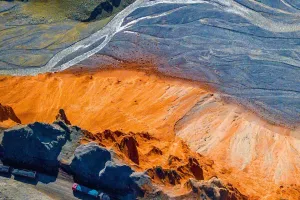The ocean holds a deadly allure for us.
On one hand, humans are innately drawn to the unknown, and the ocean, with its vast, uncharted territories, fuels our desire to explore. On the other hand, the ocean is the cradle of all life on Earth, a primordial home that evokes a deep, subconscious yearning to return.
Yet, countless people have lost their lives to the ocean's perilous depths. The rough seas are the norm, and calm waters are only a temporary facade. The ocean's powerful waves can obliterate even the strongest structures created by man. This dichotomy between the ocean's allure and its danger is a testament to its complex nature.
The ocean, often referred to as the cradle of life, was once the home of all living things on our planet. When the Earth was newly formed, it was a chaotic environment dominated by fire and molten rock. In such a hostile environment, life could not exist. It took hundreds of millions of years for the Earth to cool, allowing water to evaporate from its crust. During this time, the young Earth lacked a magnetic field, which meant that water vapour would have dissipated into space.
As the Earth's core stabilized, a magnetic field developed, and a primordial atmosphere began to form. The evaporating water collected in the atmosphere and eventually precipitated as rain. This rain may have lasted for hundreds of millions of years, covering the entire Earth with water and forming the primitive oceans.
Humans evolved from simple prokaryotic organisms, which means our ancestors once thrived in the ocean. Despite this, modern humans lack the gills or specialized lungs necessary for underwater survival. If we fall into the deep sea, death is almost certain. This inability to breathe underwater contributes to the claustrophobic fear many people experience when faced with the vast, unfathomable ocean.
Having been away from the sea for so long, humans are no longer adapted to survive in the ocean for extended periods. When confronted with the immense and powerful ocean, we often feel small and powerless. This fear is a natural response to the ocean's dangerous and mesmerizing aspects.
Before the 16th century, humans had no accurate understanding of the size of the oceans. It wasn't until the 20th century that we began to grasp the depth and complexity of the oceanic environment. Even now, humanity has only explored about 5% of the seafloor, leaving much of the ocean a mystery. Many people live far from the coast and have never seen the ocean, making the vastness and power of the sea even more intimidating.
The ocean also brings with it natural disasters such as tsunamis. A tsunami can rise from the ocean floor with devastating force, capable of destroying entire coastal communities. The fear of such events underscores the ocean's potential for destruction.
Despite these dangers, the ocean is also a treasure trove for humanity. Studies have shown that the ocean is teeming with life, enough to sustain the world’s population for decades, if not centuries. This means that even if entire continents were submerged, humans could rely on the ocean for sustenance. However, the ocean is also home to many dangers, such as sharks and other predators.
The ocean's dual nature as both a cradle of life and a source of fear highlights its profound impact on humanity. It is a place of beauty and danger, mystery and discovery, reflecting the complex relationship we have with our planet’s most formidable natural feature.


